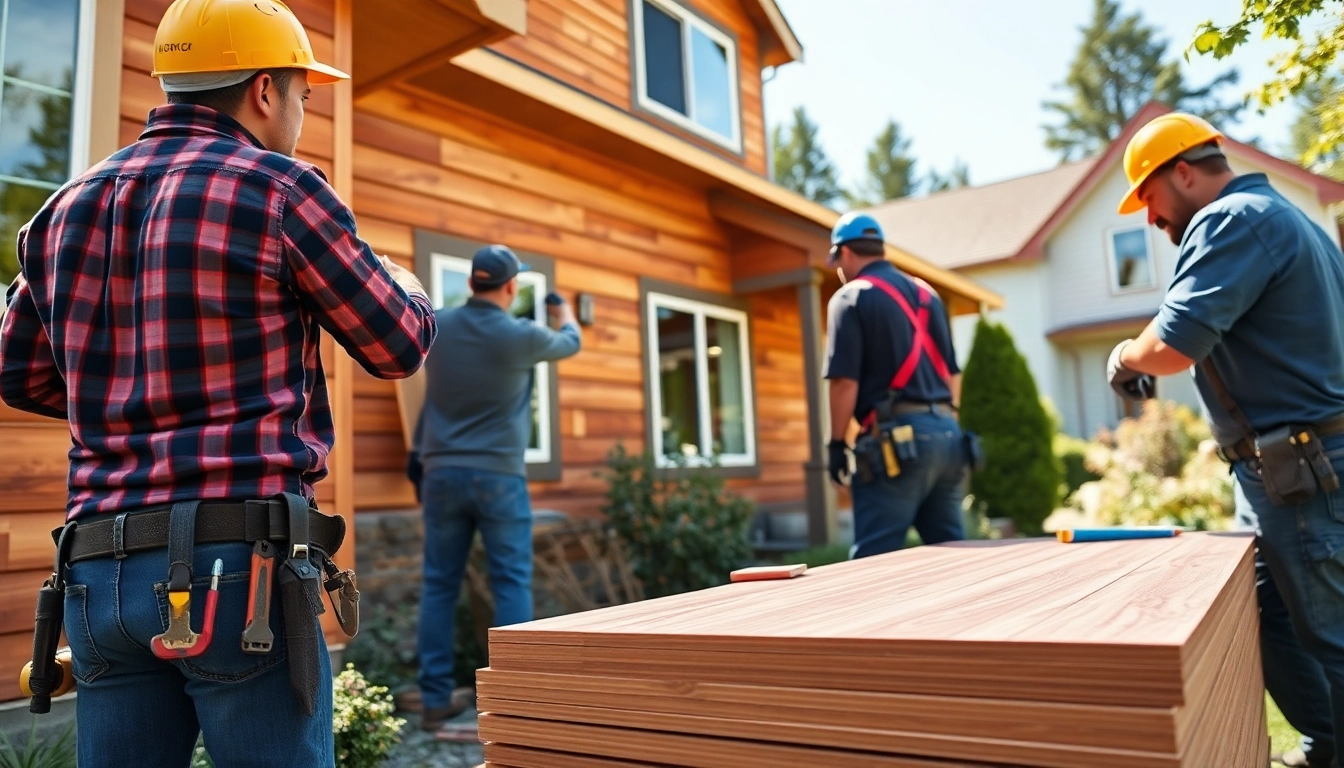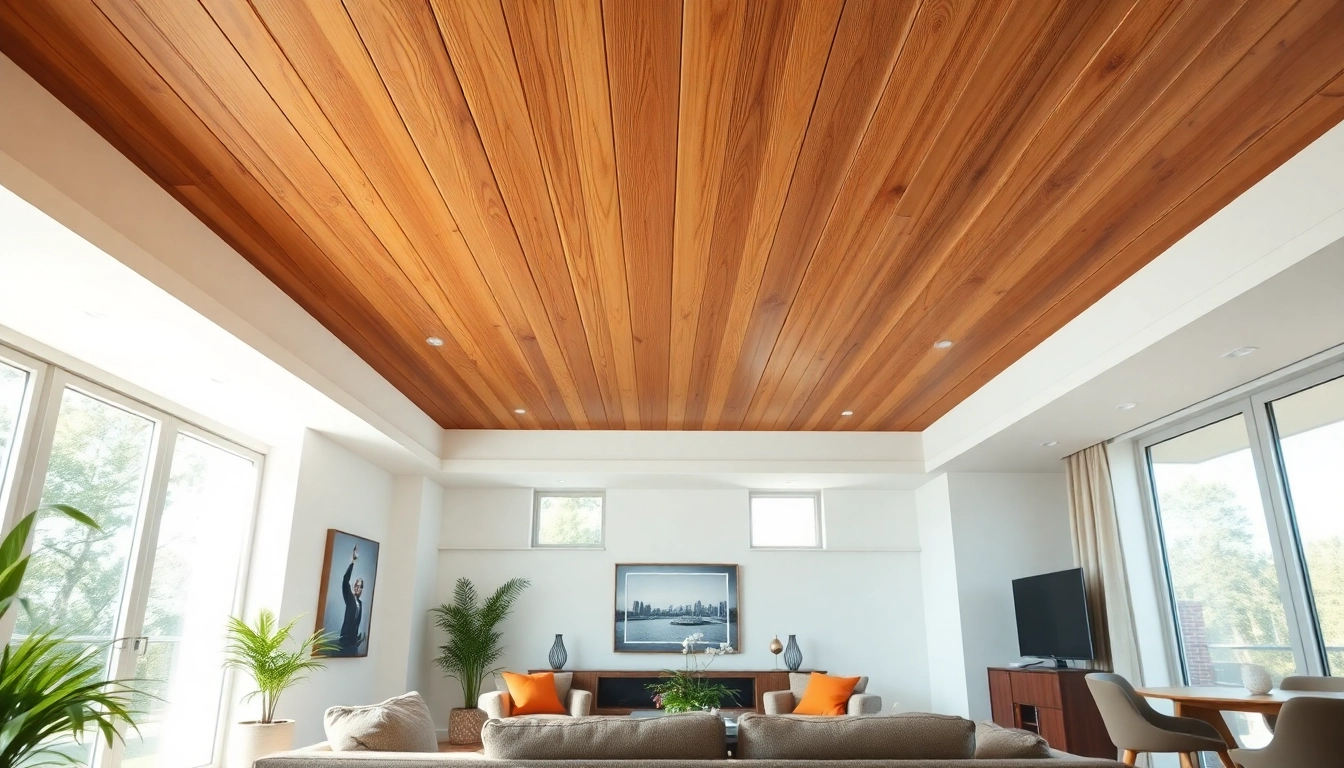1. Understanding Landscape Design Services
1.1 What is Landscape Design?
Landscape design is an art and science dedicated to the creation of outdoor spaces. This multifaceted discipline involves various elements, including planning, design, management, and nurturing of natural landscapes and outdoor environments. Professional landscape designers utilize their creativity, knowledge of horticulture, and understanding of environmental factors to create aesthetically pleasing and functional outdoor areas. These services often encompass residential, commercial, and public spaces, resulting in gardens, parks, and recreational areas that meet the needs of their users.
1.2 Key Components of Effective Landscape Design
Creating a successful landscape design requires an understanding of several key components:
- Site Analysis: This involves evaluating the land’s topography, vegetation, soil quality, climate, and existing structures. Understanding these components helps designers make informed decisions about what can work best within the given space.
- Plant Selection: Choosing the right plants is crucial for achieving aesthetic appeal while ensuring ecological compatibility. Designers consider factors like seasonal changes, climate adaptability, and maintenance requirements.
- Hardscaping: Incorporating elements such as patios, walkways, walls, and water features contributes to functionality and visual interest. The proper selection and arrangement of hardscape materials can enhance the overall design.
- Sustainability: Incorporating eco-friendly practices is vital for the longevity of a landscape. Sustainable design practices promote biodiversity, reduce chemical usage, and conserve water.
- Functionality: A landscape should serve its intended purpose—whether it’s for recreation, relaxation, or simply beautification. A professional design takes into account how people will interact with the space.
1.3 Importance of Professional Landscape Design Services
Engaging a professional landscape design service can profoundly impact the environment and aesthetics of your outdoor spaces. Their expertise not only ensures that the design complements the architecture and existing landscape but also addresses practical aspects such as drainage, lighting, and privacy. Using a professional landscape service can lead to increased property values and enhanced outdoor living experiences. For anyone looking to transform their outdoor area, understanding the benefits of a landscape design service is vital.
2. Choosing the Right Landscape Design Service
2.1 Factors to Consider When Selecting a Service
When selecting a landscape design service, several critical factors must be considered:
- Experience and Credentials: Examine the qualifications and experience of the design team. Look for certifications and memberships in professional organizations.
- Specializations: Some designers may focus on specific landscaping styles or sectors (residential, commercial, or environmental). Identifying a service that aligns with your particular needs is essential.
- Communication: Effective communication is fundamental for a successful project. Ensure that the service is responsive to your needs and provides clarity throughout the design process.
- Budget: Discuss your budget upfront and ensure that the service can accommodate your financial parameters without compromising on quality.
- Design Approach: Inquire about their design philosophy. A collaborative approach will likely yield results that resonate with your vision.
2.2 Reviewing Portfolio and Client Testimonials
One of the best ways to gauge the expertise of a landscape design service is by reviewing their portfolio and client testimonials. A diverse portfolio showcasing various styles and designs offers insight into the service’s capability to handle different projects. Look for:
- Work Samples: Examine pictures of previous projects to assess design quality and diversity.
- Client Feedback: Testimonials can reveal client satisfaction levels and highlight any recurring strengths or weaknesses.
- Before and After Photos: These images can dramatically illustrate the service’s ability to transform a space.
2.3 Questions to Ask Your Landscape Designer
When interviewing potential landscape designers, ask specific questions to evaluate their fit for your project. Consider inquiring about:
- What is your design process from start to finish?
- Can you provide references from past clients?
- How do you handle challenges or unforeseen issues during a project?
- What type of maintenance do you recommend for the designs you implement?
- How do you ensure sustainability within your designs?
3. Landscape Design Trends to Consider
3.1 Sustainable Landscaping Practices
The shift towards sustainable landscaping practices is reshaping how outdoor spaces are designed and maintained. Sustainable practices focus on creating landscapes that are environmentally friendly and resource-efficient. Some key trends include:
- Xeriscaping: Reducing water usage through the use of drought-resistant plants and efficient irrigation systems.
- Native Plants: Incorporating indigenous plants that require less maintenance and are more suited to the local climate, supporting local wildlife.
- Permaculture: Designing landscapes that harmonize with nature, promoting biodiversity and reducing waste.
3.2 Popular Plant Selections and Arrangements
Choosing the right plants can elevate your landscape design. Some popular selections include:
- Perennials: These plants return year after year, offering consistent beauty and reducing the need for replanting.
- Ornamental Grasses: Adding texture and movement to a landscape, these grasses are increasingly popular for their low maintenance requirements.
- Edible Landscaping: Integrating fruit-bearing plants and vegetables is a growing trend that combines aesthetics with functionality.
3.3 Innovative Hardscaping Features
Hardscaping elements are not merely functional; they can also create stunning visual appeal. Current trends include:
- Fire Pits: These features promote outdoor living and offer a communal space for gathering and relaxation.
- Vertical Gardens: Perfect for small spaces, vertical gardens utilize walls to create lush greenery.
- Permeable Pavers: These allow rainwater to seep through, reducing runoff and promoting sustainability.
4. Implementation Steps for Your Landscape Design
4.1 Initial Consultation and Site Analysis
The first step in implementing a landscape design is the initial consultation and site analysis. During this stage, the landscape designer assesses the physical attributes of the property and discusses the client’s needs and preferences. Important activities include:
- Conducting a thorough site evaluation to gather data on topography, soil conditions, and microclimates.
- Identifying existing plants and features that may be preserved or integrated into the new design.
- Discussing the client’s goals for functionality, aesthetic appeal, and budget constraints.
4.2 Designing Your Landscape Plan
Once the analysis is complete, the designer will begin crafting a comprehensive landscape plan. This plan usually includes:
- A detailed layout of plant selections with accompanying irrigation plans.
- Design drawings that articulate the hardscaping features.
- A project timeline and cost estimates to ensure transparency throughout the execution.
4.3 Executing the Landscape Design Project
Execution involves the physical realization of the design plan. Key steps include:
- Site Preparation: Clearing the area of debris and preparing the soil for planting.
- Installation of Hardscaping: Constructing walkways, terraces, and other structural elements as per the design specifications.
- Planting: Carefully installing selected plants according to the design layout, ensuring appropriate spacing and depth.
- Final Touches: Adding finishing elements such as mulch, decorative stones, or water features to enhance beauty.
5. Measuring the Success of Your Landscape Design Service
5.1 Evaluating Aesthetic Appeal and Functionality
Once the landscape design project is completed, it’s crucial to assess its success. Key performance indicators include:
- The visual appeal of the finished landscape in relation to the initial design plan.
- The functionality of the space, including how well it meets the client’s needs for recreation, relaxation, or sustainability.
- Feedback from users of the outdoor space regarding their experience and satisfaction levels.
5.2 Maintenance Tips for Longevity
To ensure that your landscape design maintains its beauty and practicality over time, adhere to these maintenance tips:
- Regular watering and fertilization of plants based on their specific needs.
- Pruning and deadheading to encourage healthy growth and blooming.
- Routine inspections of hardscaping features for wear and tear, repairing as necessary.
5.3 Gathering Client Feedback for Improvement
Client feedback serves as a critical tool for service improvement. Conducting follow-up interviews or surveys can provide insights into:
- Overall satisfaction with the design and implementation process.
- Areas for improvement in communication or project management.
- Suggestions for future enhancements or new projects.















Leave a Reply